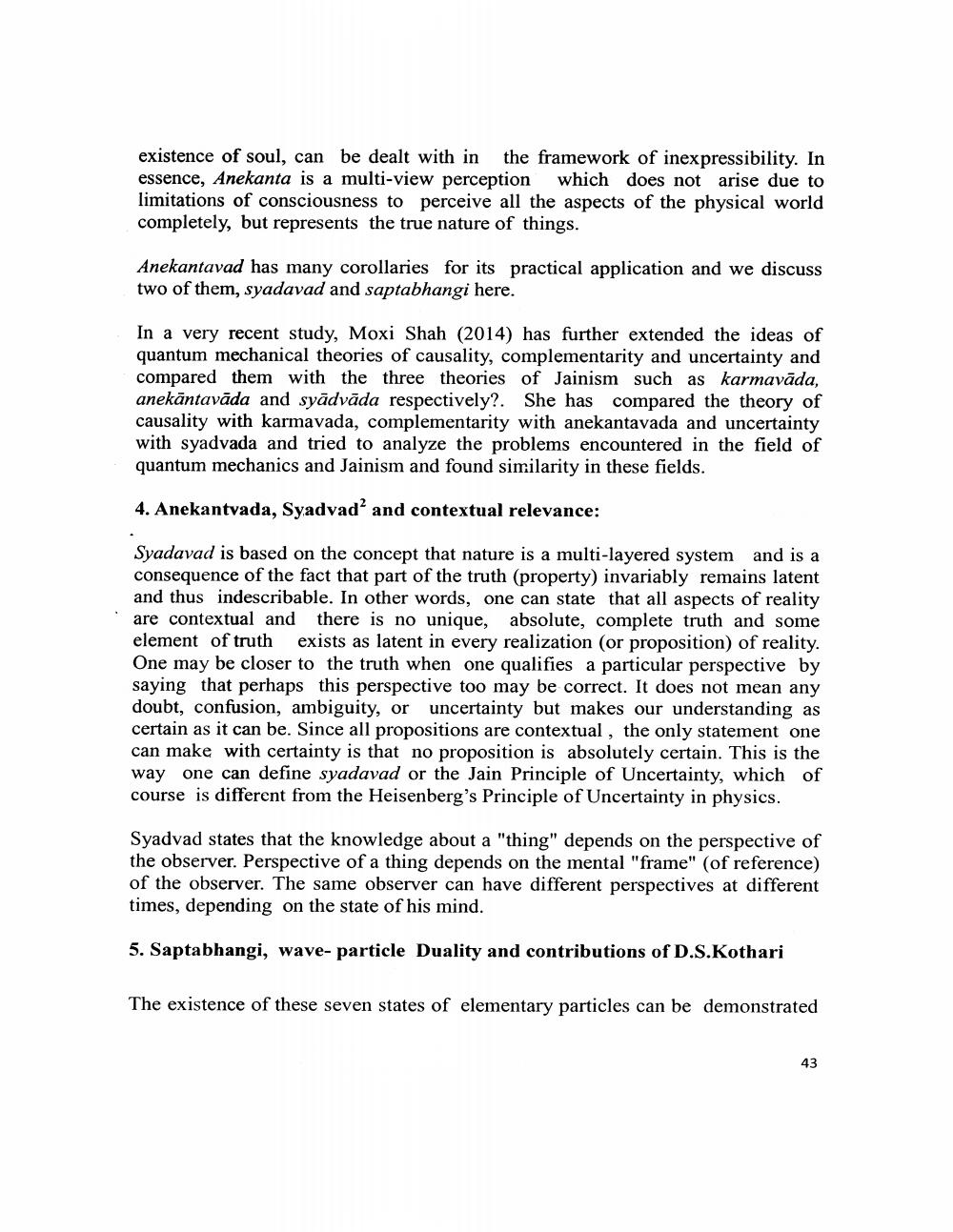________________
existence of soul, can be dealt with in the framework of inexpressibility. In essence, Anekanta is a multi-view perception which does not arise due to limitations of consciousness to perceive all the aspects of the physical world completely, but represents the true nature of things.
Anekantavad has many corollaries for its practical application and we discuss two of them, syadavad and saptabhangi here.
In a very recent study, Moxi Shah (2014) has further extended the ideas of quantum mechanical theories of causality, complementarity and uncertainty and compared them with the three theories of Jainism such as karmavāda, anekāntavāda and syādvāda respectively?. She has compared the theory of causality with karmavada, complementarity with anekantavada and uncertainty with syadvada and tried to analyze the problems encountered in the field of quantum mechanics and Jainism and found similarity in these fields.
4. Anekantvada, Syadvad? and contextual relevance:
Syadavad is based on the concept that nature is a multi-layered system and is a consequence of the fact that part of the truth (property) invariably remains latent and thus indescribable. In other words, one can state that all aspects of reality are contextual and there is no unique, absolute, complete truth and some element of truth exists as latent in every realization (or proposition) of reality. One may be closer to the truth when one qualifies a particular perspective by saying that perhaps this perspective too may be correct. It does not mean any doubt, confusion, ambiguity, or uncertainty but makes our understanding as certain as it can be. Since all propositions are contextual, the only statement one can make with certainty is that no proposition is absolutely certain. This is the way one can define syadavad or the Jain Principle of Uncertainty, which of course is different from the Heisenberg's Principle of Uncertainty in physics.
Syadvad states that the knowledge about a "thing" depends on the perspective of the observer. Perspective of a thing depends on the mental "frame" (of reference) of the observer. The same observer can have different perspectives at different times, depending on the state of his mind.
5. Saptabhangi, wave-particle Duality and contributions of D.S.Kothari
The existence of these seven states of elementary particles can be demonstrated
43




